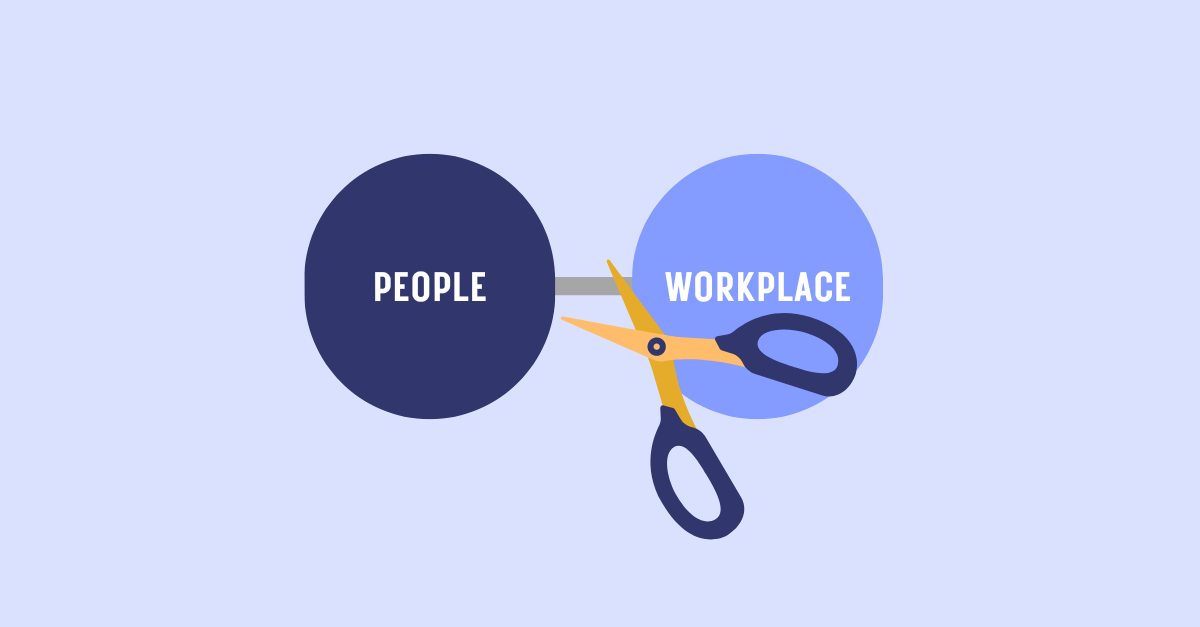
Workplace Topophilia
At the heart of human geography, lies the quest to better understand the interrelationship between people and their environments. When it comes to the world of knowledge work, the relationship between workers and their central workplaces is in many ways the most contentious it has ever been . As staff are choosing to work more […]
At the heart of human geography, lies the quest to better understand the interrelationship between people and their environments. When it comes to the world of knowledge work, the relationship between workers and their central workplaces is in many ways the most contentious it has ever been . As staff are choosing to work more flexibly and visiting their offices less often, we are compelled to ponder: is the bond between people and their workplace environment weakening? Are workplaces still adding value to people and the organisations they work with?
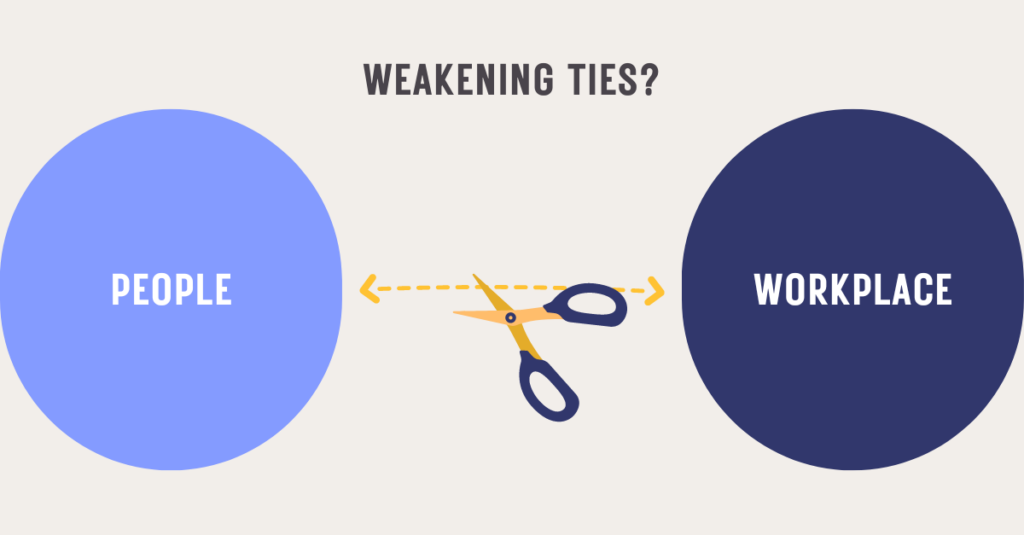
Our connection to place
There is a specific word that describes our emotional connection to place: topophilia. Topophilia combines the Greek topos (place) with philia (love of) to express the complex emotional connections people form with specific places or settings (or topophobia to describe the opposite effect). The term topophilia was popularised by the esteemed geographer Yi-Fu Tuan back in 1974. Tuan was arguably one of the key figures in human geography, and his work has been influential in exploring how individuals perceive and relate emotionally to their environments.

So, how can we strengthen the ties between people and their work-environment to create Topophilic Workplaces? In the quest to attract more staff back to their central workplaces, the concept of creating meaningful spaces is often highlighted. The rationale behind this approach is that by cultivating a workplace environment that holds genuine meaning, employees may become more naturally inclined to willingly return to the office, eliminating the need for stringent in-office mandates. This does sound kind of vague though. So, let’s use the concept of topophilia to further explore how we, as humans, attach a sense of meaning to a workplace.
Our connection to the physical workplace is a two-way relationship: places can strengthen our human connections, as well human connections can strengthen how we relate to a physical space.
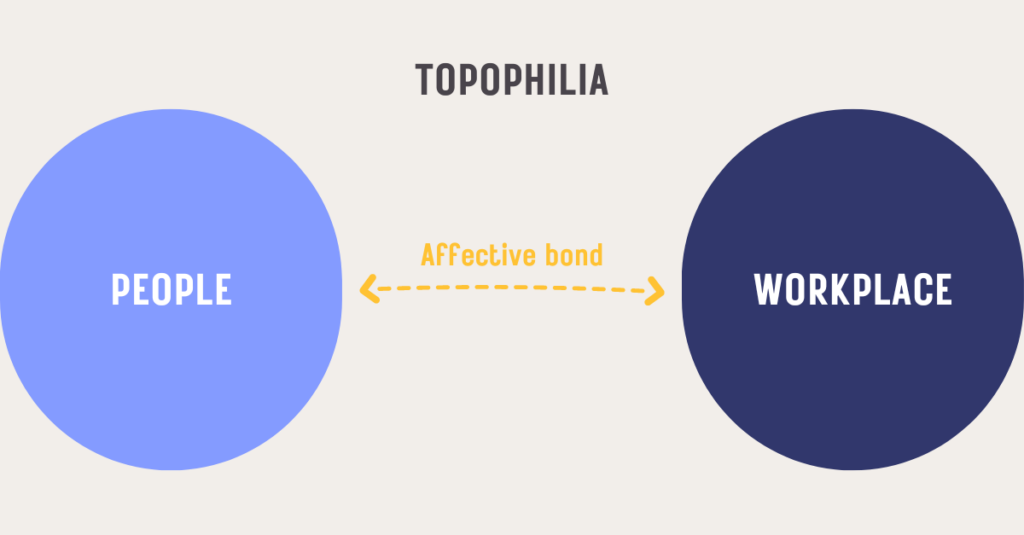
To further visualise and explain this two-way relationship, consider the following examples:
- Infusing ‘meaning’ into place through culture (from the intangible to the tangible): A strong workplace culture has the remarkable capacity to change a seemingly mundane office area into a space of significance. This is done through the shared memories and emotional connections formed through activities and interactions in that place. Imagine a simple large conference room with outdated furniture. By hosting regular gatherings, staff birthdays, team building events and cultural activities, this once-unassuming room could become a meaningful place where emotional connections and cherished memories are being made. In this example, the organisational culture is strong enough to see through the imperfections of the physical workspace. While this can be effective for a period, it may pose challenges when seeking to attract new staff who may not share the same historical context and emotional connections with the space.
- Infusing ‘meaning’ into culture through place (from the tangible to the intangible): the place itself has a story that could help strengthen the culture. Take for example Google. Google’s real estate strategy is moving away from shiny new office buildings, and is increasingly focusing on reusing and reviving old buildings with interesting histories. Google’s Spruce Goose workplace not only has a strong history, the transformation and revitalisation of the 1943 hangar is a meaningful sustainability story in and of itself as well. When a space has a compelling story, it can empower employees to become engaging storytellers, enhancing the bonds formed with their guests. This can attract both employees as well as important stakeholders to the central workplace as employees want to showcase to their clients / external stakeholders the significance of the environment. This also highlights the pride employees feel when showcasing their workplace to visitors—a telling sign of a positive workplace experience.
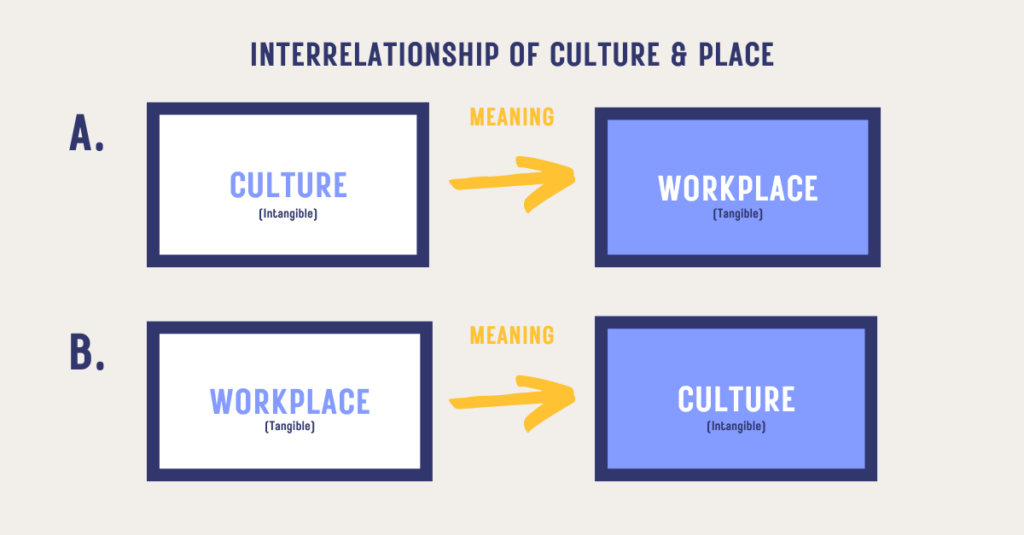
Topophilic Design
As you’re transforming your current workplace or perhaps moving into a new place, you have the unique opportunity to shape the identity of your workplace, and more importantly to shape how you as an organisation will be perceived by employees, clients, prospects and any other visitors that you may welcome in your new space.
Topophilic Workplace Design focuses on crafting environments that go beyond functionality and aesthetic appeal. It’s about creating workplaces that resonate deeply with both the individual and the collective identity of the workforce and organisation, fostering a more meaningful and connected experience. Making the workplace WHY tangible through visual/physical/spatial cues that spark storytelling and human connections and activity. Ultimately, It’s the stories and memories created in the human brain that add meaning to a place.
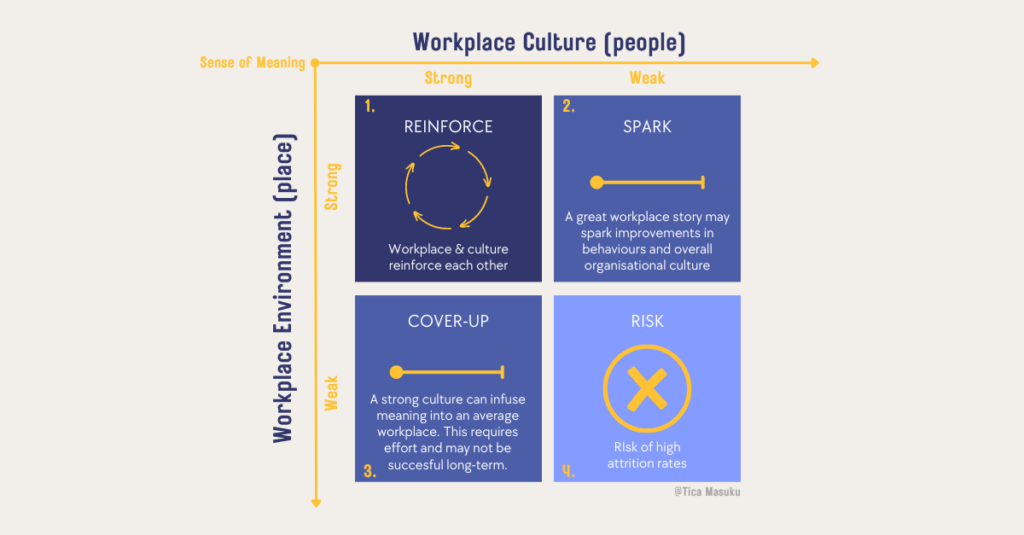
Now that we have deep dived a little further into the bond between people and workplaces, I’m keen to hear from you: Do you think more meaning in physical workplaces can help attract employees to work from the physical office more often?
Feb 27, 2024
Tica Masuku
|
[🎤Are you looking for a keynote speaker for your next event, company off-site or global summit? I'm currently organising my international speaking calendar for 2025. Please get in touch to discuss the possibilities tica.m@spaceful.com.au]
[💡Would you like to know how I can help you or your organisation apply a human geography informed strategy to your workplace? I'm the Director of Workplace Strategy at Spaceful. We assist organisations design and develop bespoke and evidence-based workplace strategy solutions. You can email me at tica.m@spaceful.com.au]
You'll get...
Thank You for Subscribing!
Website designed by Creative Vibes
2025 © Copyright Tica Masuku